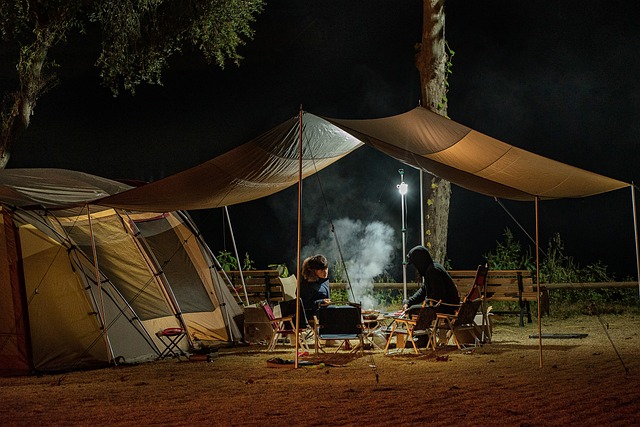
Going camping promises you clean air, beautiful scenery, and a respite from the stress of everyday life. However, when you are in the middle of nature, keeping clean is not just your personal hygiene—it is also your duty to other campers and the environment. In this guide, we will go over the key components of camping hygiene and offer easy-to-follow advice to make sure your outdoor adventures are not only safe and clean for you, but also have the least possible negative impact on the natural world.
The importance of camping hygiene essentials becomes even more important as you get ready for your outdoor adventure. From personal hygiene practices to campsite cleanliness, gear maintenance, emergency preparedness, and water purification, every aspect contributes to a healthy and responsible outdoor experience. This guide is designed to provide campers, experienced or novice, with the knowledge they need to venture into the great outdoors with confidence, knowing they are fostering a clean, safe, and sustainable environment for everyone to enjoy.
See also our post on Preserving the Past: A Comprehensive Guide on Cleaning and Preserving Vintage Postcards and Paper Collectibles
Personal Hygiene Essentials
Biodegradable Soap
Pack biodegradable soap to minimize environmental impact. Use it for washing hands, face, and body. Remember to use it at least 200 feet away from water sources to protect aquatic ecosystems.
Quick-Dry Towels
Opt for quick-dry towels that are lightweight and space-efficient. These towels are ideal for quick clean-ups, drying off after a swim, or wiping down camping gear. Look for microfiber options for maximum absorbency.
Eco-Friendly Toothpaste and Toothbrush
Choose eco-friendly toothpaste and a collapsible toothbrush for dental hygiene. Ensure your toothpaste follows Leave No Trace principles, so you can brush your teeth without harming the environment.
Biodegradable Wet Wipes
Biodegradable wet wipes are handy for freshening up when water is scarce. Use them for a quick wipe down or to clean surfaces. Dispose of them responsibly in designated waste areas.
Portable Hand Sanitizer
Keep a portable hand sanitizer in your camping kit. Use it before meals and after using shared facilities. Opt for an eco-friendly option or a refillable bottle to reduce single-use plastic waste.
Campsite Hygiene Practices
Leave No Trace Principles
Follow Leave No Trace principles by minimizing your impact on the environment. Pack out all waste, dispose of trash properly, and avoid contaminating water sources. Leave the campsite as pristine as you found it.
Digging Cat Holes
When nature calls, dig a cat hole for human waste disposal. Dig a small hole 6 to 8 inches deep at least 200 feet away from water sources, trails, and campsites. Cover it up when finished.
Campsite Kitchen Hygiene
Practice good hygiene in the campsite kitchen. Wash dishes and utensils with biodegradable soap and hot water, and use a designated area for washing to prevent contamination of the surroundings.
Waste Disposal Bags
Bring waste disposal bags for all types of trash, including food scraps. This prevents animals from being attracted to your campsite and helps maintain a clean and safe environment for everyone.
Portable Shower or Waterless Cleansing
For longer trips, consider a portable shower system or waterless cleansing options. This allows you to maintain personal hygiene even when traditional bathing facilities are unavailable.
See also our post on Preventive Maintenance for Commercial Cleaning Equipment
Clothing and Gear Hygiene
Moisture-Wicking Clothing
Choose moisture-wicking clothing to keep sweat away from your skin, reducing the risk of chafing and discomfort. These fabrics dry quickly, making them ideal for outdoor activities.
Dry Bags for Dirty Clothes
Bring dry bags to separate dirty clothes from clean ones. This not only helps with organization but also prevents odors and bacteria from spreading to your clean gear.
Foot Care Essentials
Keep your feet dry and healthy by changing socks regularly. Pack blister prevention tools such as moleskin and ensure your hiking boots fit well to prevent discomfort and foot issues.
Gear Cleaning Kit
Carry a gear cleaning kit with a small brush, mild soap, and a sponge. Regularly clean and maintain camping gear to ensure it functions optimally and lasts longer.
UV-C Sterilizer for Water Bottles
Invest in a portable UV-C sterilizer to disinfect water bottles and hydration systems. This technology eliminates bacteria and viruses, providing a convenient way to ensure your drinking water is safe.
Emergency Hygiene Preparedness
First Aid Kit
Include hygiene items in your first aid kit, such as antiseptic wipes, tweezers, and personal medications. Addressing minor injuries promptly helps prevent infections and complications.
Insect Repellent
Pack insect repellent to ward off mosquitoes and ticks. Insect bites not only cause discomfort but can also transmit diseases. Choose a repellent that suits the region you’re exploring.
Sun Protection
Maintain skin health by using sunscreen with a high SPF rating. Protect your eyes with sunglasses and consider a wide-brimmed hat for additional sun protection.
Emergency Shelter and Clothing
Be prepared for unexpected changes in weather. Pack an emergency shelter, extra layers of clothing, and a rain cover for your backpack to stay warm and dry in adverse conditions.
Navigation Tools
Avoid getting lost, as prolonged exposure to the elements can compromise hygiene. Bring navigation tools such as a map, compass, or GPS device to ensure you stay on course.
See also our post on Sustainable Cleaning for Your Canoe: Paddling in Eco-Harmony
Water Purification and Hydration
Water Filtration System
Invest in a reliable water filtration system to ensure a safe drinking water supply. Options include portable water filters, purifiers, or tablets. Follow the manufacturer’s instructions for optimal use.
Hydration System
Stay hydrated with a hydration system such as a water bladder or collapsible water bottles. This ensures you have easy access to water during outdoor activities without relying on disposable plastic bottles.
Regular Hydration Practices
Establish a routine for regular hydration. Aim to drink water consistently throughout the day, especially in warm weather or during strenuous activities, to prevent dehydration and maintain overall well-being.
Water Source Evaluation
Before using natural water sources, evaluate their safety. Choose clear, flowing water when possible, and avoid water downstream from human activities or livestock. Purify water even if it appears clean.
Leave No Trace Water Use
Minimize your impact on water sources by using them responsibly. Practice Leave No Trace principles by avoiding excessive soap use, not polluting water bodies, and respecting the natural balance of aquatic ecosystems.
See also our post on Sustainable Office Cleaning: Green Practices for a Productive Workspace
Conclusion
A clean and safe outdoor adventure involves not only experiencing nature but also honoring and protecting it. By including camping hygiene essentials in your planning, you guarantee a novel and responsible experience for yourself and other outdoor enthusiasts. This guide provides you with all the information you need for a fun and environmentally responsible camping trip, from personal hygiene practices to campsite cleanliness, gear maintenance, emergency preparedness, and water purification. You can enjoy the great outdoors with confidence, knowing that you are making a positive impact on the environment.







